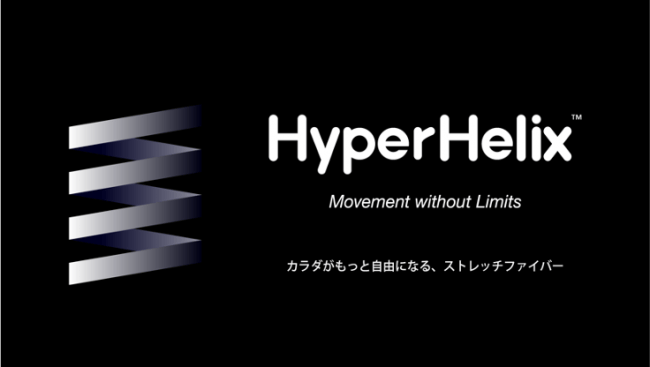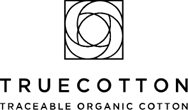*1... Sleep latency: Time taken from going to bed to falling asleep
*2... Diving time from bed down: time from last awakening to waking up
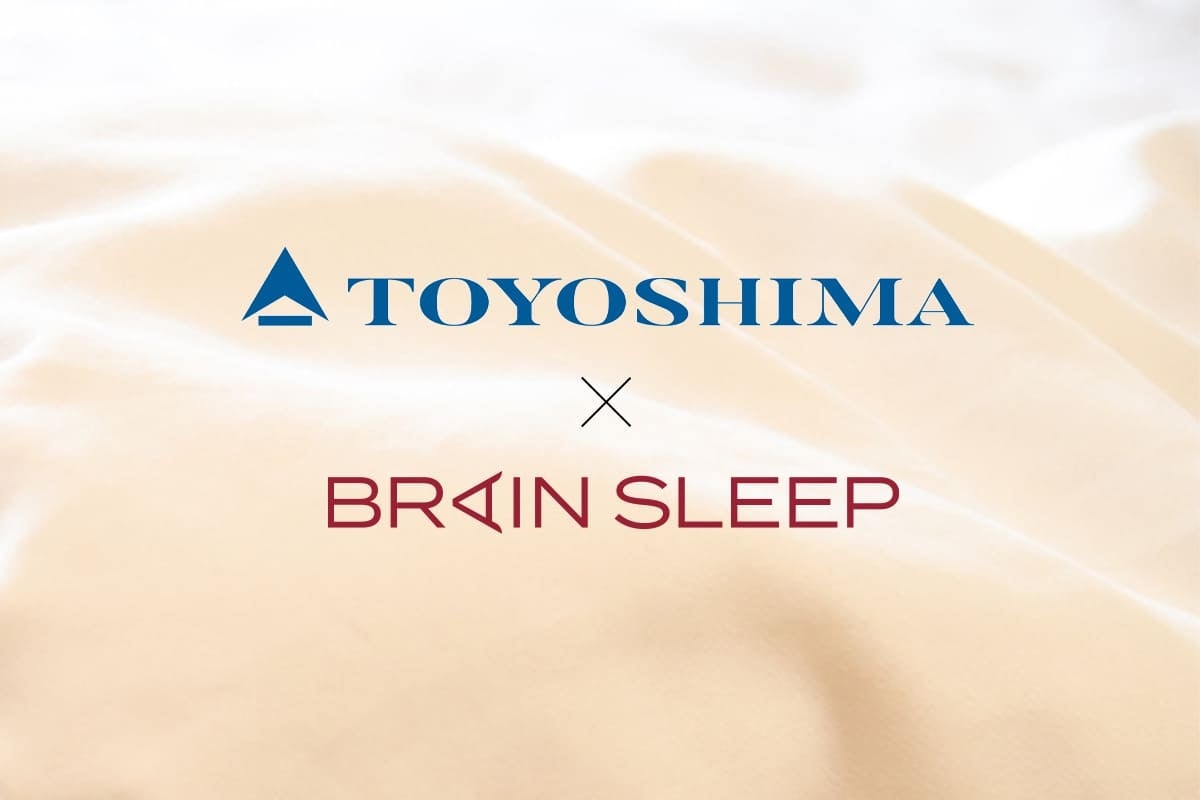
■ Background of Brain Sleep × TOYOSHIMA Initiative
Since August 2021, TOYOSHIMA has started developing washi thread materials using the newly developed DIRECT washi thread manufacturing equipment*3 with the support of ITOI Life Culture Research Institute. From the beginning, we thought that bedding was the best way to take advantage of the features of Japanese paper, such as water absorption, quick drying, smooth feel, non-sticky even when sweating, moisture retention, and deodorizing properties. We succeeded in developing a bedding material that Go to bed with the prototype product and experience the depth and comfort of sleep. In order to quantify and visualize this comfort, we requested verification from Brain Sleep, which develops products based on sleep medicine, transmits correct sleep information, and supports acquisition of correct evidence regarding sleep. We aim to contribute to your comfortable sleep through this material.
*3…The “world’s first” washi thread manufacturing machine with a patent (Patent No. 6822708) owned by ITOI Seikatsu Bunka Kenkyusho.
A device that can create yarn by directly twisting thin base paper (10gr/m2) while slitting it (without winding the slit yarn). Dramatic improvement of work efficiency, stability of quality, rationality of yarn price, etc. have been realized.
■ Verification product: Features of Japanese paper bedding covers
Washi yarn bedding covers are designed with a fabric structure that covers the surface with washi yarn “WAGAMI”. It has the functions of Japanese paper, such as "cool in summer and warm in winter", as well as high hygroscopicity and release. In addition, the waste wood discharged during logging in managed forests is used as wood pulp, which is the raw material for Japanese paper. Recycled PET raw materials are also used for polyester that is twisted with Japanese paper. A bedding cover that combines functionality and sustainability.
■ Verification details
In this verification, we compared the above-mentioned "bedding cover made of Japanese paper" and the general "bedding cover made of cotton poly", and verified the effect of the difference in the material of the bedding cover on sleep. For 6 men and women in their 20s to 60s, go to bed using two different types of bedding covers, a Japanese paper bedding cover and a general cotton poly bedding cover, in the same environment (temperature and humidity specified) *4. and measured sleep.
The two types of bedding covered are as follows.
1 Washi yarn bedding covers: Washi yarn pillowcases, sheets, and futon covers
2 Cotton/polyester bedding covers: commercial products made of cotton and polyester (pillowcases, sheets, duvet covers)
(Pillowcase/sheets: 70% cotton/30% polyester, duvet cover: 50% cotton/50% polyester)
Sleep status was evaluated using an activity meter as an objective index and the OSA Sleep Questionnaire (MA version)*5 as a subjective index. We also measured the temperature and humidity inside the bed using a thermohygrometer.
*4: A room in which the temperature and humidity are adjusted to about 27°C and a relative humidity (RH) of 80% *5: A statistical scale of the feeling of sleep, proposed by the Japan Sleep Improvement Council common sleep assessment methods. A psychological scale that evaluates sleep introspection when waking up, evaluated with 16 items categorized into 5 factors: "drowsiness when waking up", "sleep onset and sleep maintenance", "dreaming", "fatigue recovery", and "sleep time". .
■ Verification results
Result ①: Objective data from activity meter
Compared to the cotton poly bedding cover group, the washi yarn bedding cover group tended to have shorter sleep latency and bed leaving latency. In addition, although it was not statistically significant, it was suggested that sleep efficiency*6 may improve as a result of shortening sleep latency and bed leaving latency. Therefore, it was found that using Japanese paper bedding covers tended to improve the ease of falling asleep and the ease of waking up.
*6…Sleep efficiency: The ratio of sleep time (excluding waking time) to bedtime
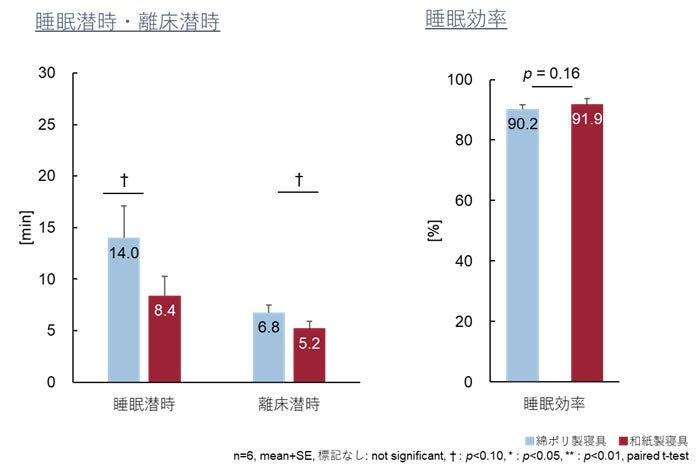
Result 2: Objective data from in-bed environment measurements
There was no difference in the amount of change in temperature and humidity between the cotton poly bedding cover group and the Japanese paper yarn bedding cover group.
On the other hand, in order to evaluate the number of times that the bed temperature fluctuated significantly in order to evaluate the number of times the bed was made to perform some kind of movement during sleep, it was found that the Japanese paper bedding cover group was made of cotton poly. It was found that the number of fluctuations tended to decrease for the bedding cover group. From these results, it is considered that the functional features of the bedding cover made of washi yarn, such as quick-drying and moisture absorption, may have reduced the difficulty of sleeping.
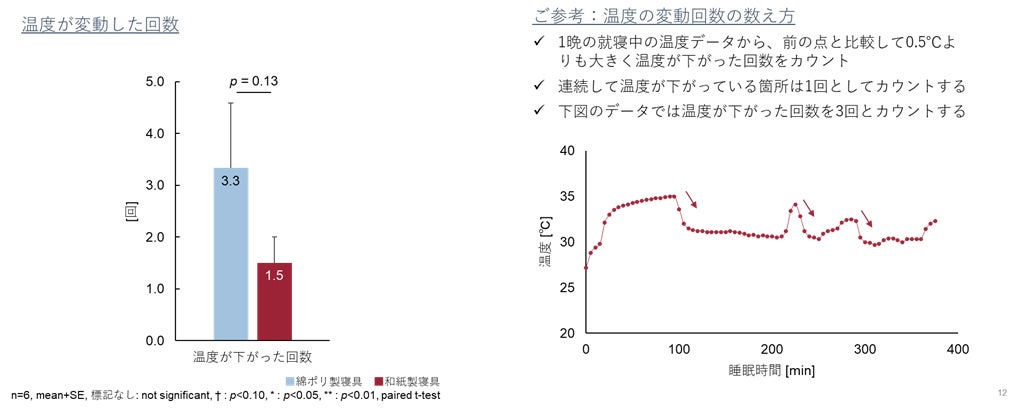
Result ③: Subjective data by questionnaire using VAS
In this verification, we used the OSA Sleep Questionnaire (MA version) as a subjective evaluation. As a result, it was confirmed that the bedding cover group made of Japanese paper had a significantly higher score for the item "Recovery from fatigue" compared to the cotton poly bedding cover group. There was also an improvement trend in terms of “good sleep”. From this, it can be inferred that the Japanese paper bedding cover improved the quality of sleep and led to recovery from fatigue after waking up.
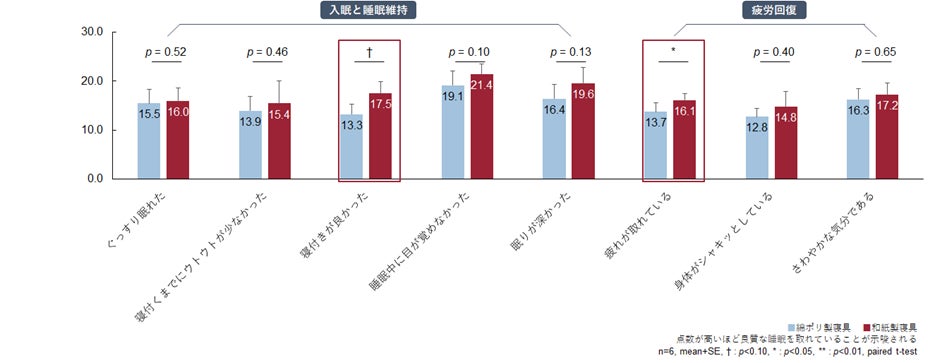
■ Consideration of the results
As a result of the above verification, it was confirmed that the “bedding cover made of Japanese paper” can contribute to (1) better falling asleep and (2) improved quality of sleep compared to the general “cotton poly bedding cover”.
(1) From the results of sleep index and subjective evaluation, it was confirmed that there is a tendency to improve the quality of falling asleep.
(2) Based on temperature and humidity measurements, sleep indices, and subjective evaluations, the quick-drying function of Japanese paper bedding covers suppresses discomfort on the surface of the body, reduces the difficulty of sleeping, reduces fatigue, and improves wakefulness. It is thought that the possibility of improving is suggested.
■ Test overview
Subjects: 6 men and women in their 20s to 60s
Test method: crossover test
Measurement items: activity level, questionnaire evaluation using the VAS (Visual Analogue Scale) method, bed temperature and humidity
Test environment: Approximately 27°C, temperature and humidity such that the relative humidity (RH) is 80%
Test items: -Bedding covers made of washi yarn: pillowcases, sheets, and futon covers made of washi yarn
-Cotton/polyester bedding covers: cotton/polyester commercially available products (pillowcases, sheets, duvet covers)
(Pillowcase/sheets: 70% cotton/30% polyester, duvet cover: 50% cotton/50% polyester)
Comment from Brain Sleep (Chief Research Advisor/Mr. Seiji Nishino)
Sleep is said to be fragile. External factors such as the bedroom environment, internal factors such as anxiety and tension, and physical factors such as pain interfere with good sleep. Especially in the hot and humid Japanese summer, it has been pointed out that the environment such as bedrooms and bedding affects sleep.
In this verification, using bedding covers made of washi yarn, which has excellent quick-drying and moisture absorption properties, tended to improve the quality of falling asleep and waking up, and we were able to realize "recovery from fatigue". , not only reaffirmed the importance of bedding for good quality sleep, but also expanded the possibility of applying new materials to bedding, which seems to be a very interesting result.

<Mr. Seiji Nishino>
Professor, Department of Psychiatry, Stanford University School of Medicine; Director, Institute of Sleep Biorhythm Research, Stanford University
Brain Sleep Co., Ltd. Founder and Chief Research Advisor
Certified Mental Health Physician, Japanese Sleep Society Specialist, Industrial Physician, Physician, Doctor of Medicine

■ Brain Sleep Co., Ltd.
Established: May 2019
Location: JP Tower 26F, 2-7-2 Marunouchi, Chiyoda-ku, Tokyo
Representative Director: Kosuke Michibata
Brand site: https://brain-sleep.com/
Business overview: Brain Sleep was established in 2019 with the mission of “Best sleep, happiest life”. We mainly develop original products and services based on cutting-edge sleep research, consult with companies specializing in sleep, and disseminate sleep information with medical evidence.

Lifestyle proposal trading company
■Toyoshima & Co., Ltd.
Founded in 1841. Based on more than 180 years of experience, we are expanding our business domain in response to the changing times. We are comprehensively responsible for the supply chain of the fashion industry, from global raw material arrangement to final product planning, production management, and delivery. In addition, as a company that proposes sustainable lifestyles, we will promote the development of sustainable materials and functional products for a Society 5.0 society, and provide services utilizing information technology through investments and alliances with tech ventures.
Since 2019, we have adopted "MY WILL" as our statement and set out our stance.












